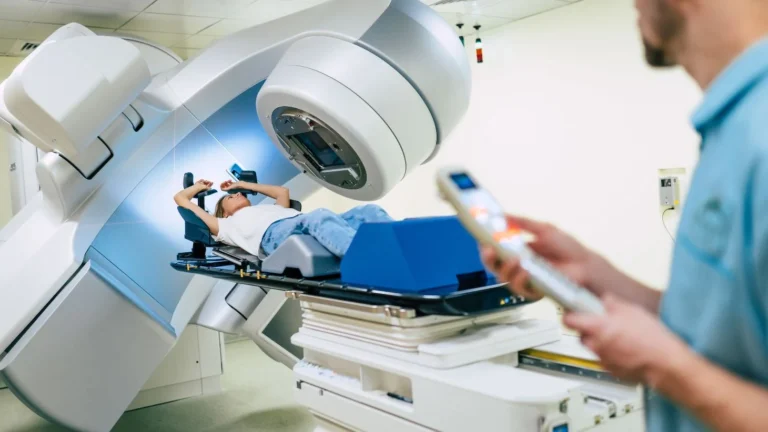
The year 2024 has seen remarkable advancements in cancer research and treatment, offering new hope for patients and redefining how we approach this challenging disease. From cutting-edge therapies to breakthrough technologies, the field of oncology is evolving at a rapid pace. This guide covers the most significant innovations in cancer treatment that have emerged in 2024 and what they mean for the future of cancer care.
1. Immunotherapy: Precision and Personalization
Immunotherapy has continued to revolutionize cancer treatment by harnessing the body’s immune system to fight cancer cells. In 2024, personalized immunotherapy has become more refined, with new developments aimed at making treatments more effective and accessible for a wider range of cancers.
a. CAR-T Cell Therapy Advancements
- Chimeric Antigen Receptor T-cell (CAR-T) therapy involves modifying a patient’s T-cells to target and destroy cancer cells. In 2024, second-generation CAR-T therapies have shown greater efficacy, particularly in blood cancers like leukemia and lymphoma, and are now being expanded to treat solid tumors such as breast and lung cancers.
- New trials focus on reducing side effects, including cytokine release syndrome, making the therapy safer for more patients.
b. Personalized Vaccines
- Personalized cancer vaccines, designed to teach the immune system to recognize and attack specific mutations in a patient’s tumor, have advanced significantly in 2024. These vaccines are tailored based on genetic analysis of a patient’s tumor and are showing promising results in preventing cancer recurrence, particularly in melanoma and lung cancer.
c. Immune Checkpoint Inhibitors
- Drugs that target immune checkpoints, such as PD-1/PD-L1 inhibitors, have shown expanded success in various cancers, including previously resistant forms like triple-negative breast cancer. New combinations of immune checkpoint inhibitors are proving more effective, with fewer adverse side effects.
2. Targeted Therapies: Precision Medicine’s Next Chapter
Targeted therapies, which zero in on specific genes or proteins that drive cancer growth, have seen remarkable breakthroughs in 2024. By tailoring treatments based on the genetic makeup of tumors, targeted therapies provide a more personalized approach.
a. Next-Generation Sequencing (NGS)
- NGS technology has become more widespread and affordable, allowing for deeper analysis of tumors. With the ability to identify rare mutations, patients are now matched with highly specific therapies designed to target the molecular profile of their cancer.
- This approach is particularly beneficial for hard-to-treat cancers such as pancreatic and ovarian cancer, where new targeted drugs are showing efficacy in early trials.
b. KRAS Inhibitors
- One of the most exciting breakthroughs of 2024 is the development of KRAS inhibitors. The KRAS mutation, long considered “undruggable,” is common in cancers like lung, colon, and pancreatic cancer. New inhibitors, such as sotorasib, have demonstrated success in targeting KRAS G12C mutations, offering a lifeline to patients who previously had few options.
c. PARP Inhibitors and Beyond
- Drugs like PARP inhibitors have continued to gain approval for treating cancers with BRCA mutations, such as ovarian and breast cancers. In 2024, these inhibitors are being combined with other drugs, including immunotherapies, to enhance effectiveness and overcome resistance.
3. Artificial Intelligence (AI) in Cancer Diagnosis and Treatment
Artificial intelligence is transforming cancer care, from early detection to personalized treatment plans. In 2024, AI algorithms are helping oncologists make faster and more accurate diagnoses while guiding more precise treatment strategies.
a. AI in Early Detection
- AI-powered tools are now able to detect cancer at its earliest stages through advanced imaging and biomarker analysis. For example, liquid biopsies analyzed by AI algorithms can identify circulating tumor DNA (ctDNA) in the blood, allowing for the detection of cancers like lung and pancreatic cancers months before they would be visible on traditional scans.
- AI has also been integrated into mammograms and colonoscopies, improving accuracy and reducing false positives.
b. AI for Personalized Treatment Plans
- AI is being used to analyze vast datasets from clinical trials and real-world patient data to predict the best possible treatment options for individual patients. This approach enables oncologists to tailor therapies based on how similar patients responded to treatment, improving outcomes.
c. AI-Driven Drug Discovery
- AI is accelerating the discovery of new cancer drugs. Machine learning models can now analyze chemical structures and predict how they will interact with specific cancer cells, dramatically reducing the time needed for drug development.
4. Radiotherapy: Precision and Effectiveness
Radiotherapy remains a cornerstone of cancer treatment, but in 2024, it has become more precise and less damaging to surrounding healthy tissue. Proton therapy and image-guided radiotherapy (IGRT) are leading this charge, offering new hope for patients with complex cancers.
a. Proton Therapy
- Proton therapy uses protons rather than traditional X-rays to treat cancer, delivering more targeted radiation to tumors while sparing healthy tissue. This makes it especially useful for cancers near vital organs, such as brain, spinal cord, and head and neck cancers.
- New developments in proton therapy technology are making it more affordable and accessible in 2024, expanding its use beyond specialized centers.
b. Stereotactic Body Radiotherapy (SBRT)
- SBRT is a highly precise form of radiation therapy that delivers higher doses of radiation in fewer treatment sessions. It is proving particularly effective in treating small, localized tumors in the lung, liver, and prostate, with fewer side effects than conventional radiotherapy.
5. Liquid Biopsies: Revolutionizing Cancer Monitoring
Liquid biopsies are blood tests that detect cancer-related genetic material in the bloodstream. In 2024, these tests have become even more sophisticated, allowing oncologists to monitor cancer progression and treatment response without invasive procedures.
a. Early Detection and Monitoring
- Liquid biopsies can detect cancer recurrence early by identifying circulating tumor DNA (ctDNA) in the blood, often before symptoms appear or imaging scans can detect changes. This allows for timely interventions and better management of relapses.
b. Non-Invasive Tumor Profiling
- Instead of relying on tissue biopsies, which can be invasive and risky, liquid biopsies offer a non-invasive way to analyze the genetic makeup of tumors. This is especially helpful for cancers that are difficult to biopsy, such as lung or brain cancers.
- Liquid biopsies are also helping doctors track how tumors evolve over time, leading to more adaptive and personalized treatment plans.
6. Gene Editing and CRISPR: A New Frontier
Gene-editing technology, especially CRISPR-Cas9, continues to offer groundbreaking potential in cancer treatment. By editing genes at the molecular level, scientists can potentially fix the genetic mutations that cause cancer.
a. CRISPR in Cancer Immunotherapy
- In 2024, researchers are using CRISPR to enhance T-cell therapy by editing T-cells to better recognize and attack cancer cells. This approach is showing promise in treating blood cancers like leukemia and lymphoma, as well as solid tumors.
b. Gene Editing for Cancer Prevention
- Scientists are also exploring the possibility of using CRISPR to correct inherited genetic mutations that increase cancer risk, such as BRCA mutations in breast and ovarian cancer. This could offer a preventive strategy for high-risk individuals.
7. Combination Therapies: Synergistic Approaches
Combining different treatment modalities—such as immunotherapy, chemotherapy, and radiotherapy—has emerged as a powerful strategy in 2024. Researchers are discovering that combining therapies can overcome resistance, improve effectiveness, and reduce side effects.
a. Immunotherapy and Chemotherapy
- In several cancers, including lung and bladder cancer, the combination of immunotherapy with chemotherapy has led to improved survival rates by boosting the body’s immune response while directly killing cancer cells.
b. Targeted Therapy and Immunotherapy
- Targeted therapies that focus on specific genetic mutations are being paired with immunotherapies to improve outcomes in cancers like melanoma and non-small cell lung cancer. These combinations are showing greater efficacy than either treatment alone.
Conclusion
The breakthroughs in cancer treatment in 2024 mark a new era in oncology, offering more effective, personalized, and less invasive treatment options for patients. From the rise of AI and liquid biopsies to advances in immunotherapy and gene editing, the future of cancer care is becoming increasingly hopeful. While challenges remain, these innovations are bringing us closer to a world where cancer can be more effectively managed, treated, and even cured.
As research continues to advance, these 2024 developments are paving the way for more lives to be saved and for cancer care to be more tailored to each patient’s unique biology. The future of oncology is bright, and each breakthrough brings us closer to conquering cancer.
